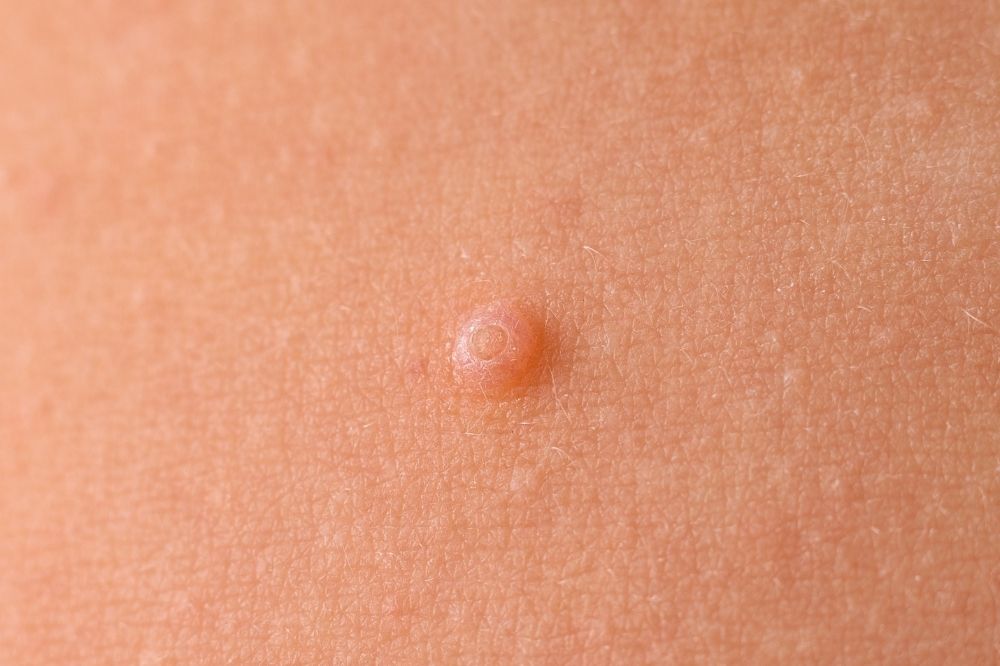Molluscum contagiosum is a common and harmless viral skin infection. It is a contagious infection and can be transmitted from another individual by direct contact. It can occur at any age, but is more common in children and young adults. In addition, molluscum seen in the genital area is often sexually transmitted.
What Causes Molluscum Contagiosum?
Molluscum contagiosum is caused by a poxvirus (molluscum contagiosum virus), which is transmitted between people through direct contact with someone who has the virus or by touching an object that the virus has contaminated, especially with shared clothes-towels. It is thought to pass through damaged skin more easily. After a few weeks of incubation, the rash appears. The rash may be seen more often and widespread in individuals with atopic eczema and in people whose immune system is suppressed for any reason (for example, those receiving immunosuppressive therapy). However, the vast majority of molluscum contagiosum patients are previously healthy individuals.
What are the Findings of Molluscum Contagiosum?
The lesions are dome-shaped, raised from the skin, with a glossy surface and a central hub. They are usually small lesions, 2-6 mm in diameter, rarely they can be larger. The most striking feature of these lesions, which are usually skin-colored, sometimes redder or paler, is the presence of a pit with a cheesy plug in the center. While there may be only one or a few rashes, they are usually less than 20 in number. They tend to group. Rarely, the number of lesions may exceed 20.
How is Molluscum Contagiosum Diagnosed?
No blood tests are needed for diagnosis and, rashes can easily be recognized by the physician. If an inflammatory process occurs in the molluscum contagiosum lesion, a boil appearance may be seen. Again, it should not be confused with warts with a coarser surface and no central pore.
How is Molluscum Contagiosum Treated?
The treatment is determined according to the age of the patient, the severity and location of the disease. The disease can heal on its own. Many forms of treatment are painful and, therefore, in children with a small number of lesions, the rash can be left untreated until it disappears on its own. Apart from this, cryotherapy (cold therapy) can be done at certain intervals until the rashes disappear. Another effective method is curettage treatment. It is an easy method to squeeze the molluscum content with forceps and/or a scalpel. Pulsed dye laser therapy is yet another treatment option. All these treatment methods are very difficult to apply in children. Children can be treated under local anesthesia or sometimes general anesthesia in widespread cases. Locally applied dissolver, destructive drugs, antiviral drugs are other treatment options preferred in children.
Can Molluscum Contagiosum Heal On Its Own?
The disease can heal on its own. Rashes usually disappear spontaneously within 6-18 months. Sometimes this period can be extended up to 4 years. It should be considered that in cases left untreated, the patient may infect others during this period and may experience psychological problems due to the disease. The rashes take a red and inflammatory appearance before they disappear, and after the larger ones heal, they may leave small sunken scars on the skin.
What Should a Person with Molluscum Contagiosum be aware of?
The use of shared towels, underwear and clothing should be avoided in order not to transmit the infection to others, especially to the inner circle. However, there is no need for children with molluscum contagiosum to stay away from school or to prohibit swimming for these children.




